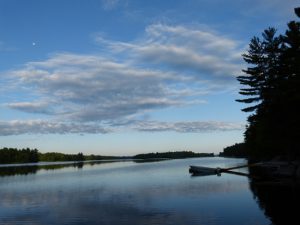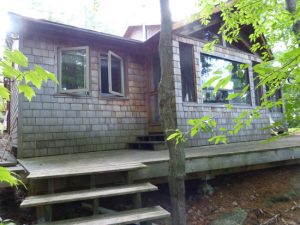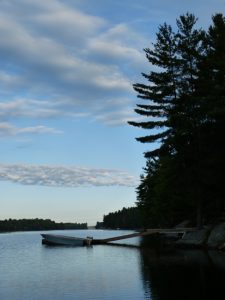
It kind of snuck up on me. Caught me off guard. My wife and I had taken a few days off from a relatively hectic few weeks of work. We’d joined some friends for an extended weekend up North at a cottage on a lake, whose name I’ve forgotten. To feel less guilty about abandoning projects that needed attention back at my office, in fact, I’d even brought along my laptop and some files. Then, somewhere between transcribing an interview and writing a letter to a publisher, it happened.
I moved from my impromptu desktop – a table and chair in a screened-in porch – to a summer couch in a quiet corner of the cottage to read … and I fell fast asleep.

I think I was out in an instant. But since we were on a bit of a holiday and the demands of my office were hundreds of kilometres away, I guess my mind was less bothered by the idea of quitting for a while and I slept. Right in the middle of the afternoon. Oh, I wasn’t out long. Maybe 20 or 25 minutes. But I must have slept soundly because I almost missed the daily afternoon call from our hosts.
“Anybody up for a swim?” they called and I finally came around.
Now, just about anybody – even a writer facing some pretty rigid deadlines later this summer – can be forgiven for relaxing, even nodding off on a summer afternoon, for that reason alone. It’s what summers in Canada are for. But, imagine for a minute that I had decided in the thick of the back-to-school, back-to-work of September to curl up on a couch and catnap. Or what if I’d chosen during the hectic mid-winter’s race against fiscal year-end or taxes or RSP season, to excuse myself to put on a pair of airline eye shades and ear plugs to zone-out for a while. Well, in this part of the world at least, I’d be ridiculed, if not fired.

Elsewhere, it turns out, not so much. I read a story in the New York Times back in the spring in which magazine writer Malia Wollan spoke to a sleep researcher in Paris. Dr. Damien Léger runs tests on Parisians, among others, and has concluded that napping is a basic right, not a petty luxury. He maintains, in the story, that everybody ought to be permitted some naptime, especially first responders and shift workers.
But the study he assembled also suggests that those of us who suffer from sleep deprivation (and let’s face it, that’s principally a lot of the same people who crave naps), run some pretty hefty health risks – hypertension, diabetes, depression, obesity, cancer and even death, the good doctor suggested.
But there’s lots of strong endorsement for napping on this side of the pond too. Arianna Huffington, the editor-in-chief of the Huffington Post, has come to pretty much the same conclusion. She writes about the science of sleeping and dreaming. But more to the sleep deprivation issue, she takes on the sleeping pill industry and decries our addiction to technology as another source of sleep disruption. In a TED Talk she said she learned the truth the hard way.
“One day, I fainted from exhaustion and hit my head on my desk. I broke my cheek bone and got five stitches on my right eye,” she said, “and that’s when I began the journey of rediscovering the value of sleep.”
She went on to say that she studied sleep deprivation. She met with scientists and doctors and they all claim that the way to more productivity, more inspiration and greater joy in life is getting enough sleep.
“I urge you to shut your eyes,” she said in the TED talk, “to shut down your engines and discover the power of sleep.”
Now, Dr. Léger didn’t stop with his research of napping. He went on to help those, who feel brave enough to raise the issue with their work supervisors, to come up with strategies to promote and institute regular napping. He suggested that factories and other workplaces that are shift oriented should help workers take naps, find them spots where they can block out the light, shut out noise and rest; he suggests that sometimes even putting one’s head down on a desk is sufficient.

“But bring along a small pillow for your head,” Léger said in the New York Times story. “Napping is much more powerful than caffeine, and there are no negative side effects.” And, by the way, he said the ideal length of time for a nap is about 20 minutes. That’s exactly the time I stole at the lake last weekend! Now, if I can only convince the co-ordinator where I teach that a 20-minute snooze would be a good idea – for me, as well as my students. It would be like kindergarten naptime at the downtown campus.
“There’s nothing shameful about a nap,” Dr. Léger said.